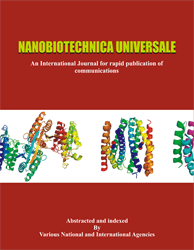Assessing the accuracy of BMI and Body Fat Percentage in Identifying Obesity: A Comparative Study Examining the Influence of Socio-Economic and Lifestyle Factors
1Fathima Shamrin CM, 2Susmitha K and 3M. Pushpa Devi
1,2,3Department of Clinical Nutrition, Kongunadu Arts and Science College (Autonomous) Coimbatore - 641030 (India) Corresponding Author: Fathima Shamrin CM Email ID: fathimashamrin04@gmail.com This research did not receive any specific grant from funding agencies in public, commercial, or not-for-profit sectors.
ABSTRACT
Obesity has become a significant public health issue in India, largely driven by lifestyle and dietary changes. This study aimed to assess the nutritional status of adults using key indicators such as Body Mass Index (BMI), body fat percentage, and waist-to-hip ratio. The study sought to examine the relationship between BMI, body fat percentage, and lifestyle factors in adults aged 20-50 years. Additionally, it aimed to explore the impact of demographic factors like education, occupation, and dietary habits on body composition
